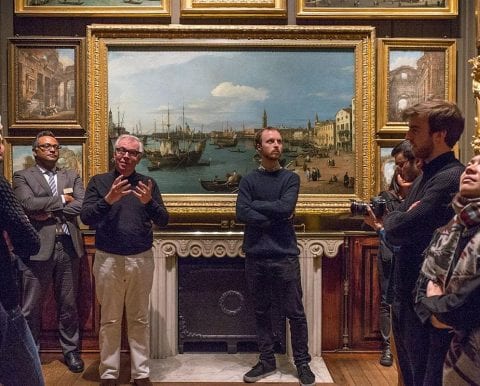The Challenge
CAS’s mission is to collect, donate and promote artists and their works held within its collection.
To support this cause and give the artwork and artists the recognition they deserve, CAS needed an easy way to promote works and artists online. A new website was required to display collections for the first time. Ensuring content was presented in a visually engaging way remained vital. Our new website represents such an enormous advance for us as an organisation. It has been a hugely complex process to bring such a wealth of information into the public domain in a way that is lively, engaging and easy to navigate. Un.titled could not have been better partners.

The Solution
The Un.titled team ran Discovery sessions with the CAS team, initially looking back over our work on UX design.
Our team then developed an impressive collections and corporate website solution. We supported a website migration from WordPress to the Drupal platform which is integrated with the charity's database system, Qi.
This universal content and collections management solution is built by a company called Keep Thinking, and is used by a number of organisations in the arts industry.
CAS has nearly 16,000 records in Qi, comprising 14,000 individual objects, people, artists, organisations and museums.
Un.titled carried out essential integration work between the CAS website and the Qi database, mapping out the data transfer.
With so many records on the new website, we collectively agreed it was important to avoid having a setup where each record pulled data through each day. This would slow down the website for users, negatively affecting their experience.
Instead, Un.titled developed a system which uses time stamps for the records within the CAS collection. If a record has been changed, then data is pulled through. If it has not been changed, then the record is left as it is.
This has helped to reduce the amount of requests made and ultimately supported CAS's ambition to enable the website to operate at a faster speed. In addition to improving the website speed, fewer requests also lowers the carbon factor.
As part of this effort, we enabled a Wikipedia integration so that CAS can extract information for artists from their Wikipedia page within Qi. This was the first work of this kind that we have delivered for a client.

What we did
A major part of the project was the decision to use the React.JS framework. The previous CAS website had around 2,000 pages. However, the new version, which includes the full CAS collection, has 18,000 pages. We therefore needed to ensure the site remained quick and responsive, and that viewing and searching for pages was a speedy process for site visitors as the new site will only grow over time.
Our development team selected React due to its component-based design and modular fit. React is very flexible and adaptable and so, we can easily adapt to CAS's needs in the future should they wish to develop their search offering.
React is also more robust than other alternatives. Additionally, within React, search is broken down into four separate indexes. This means React can access data super quickly.
One of the challenges within this project was accessing the correct data. In some instances, the Un.titled team had to look across different records. For example, CAS's artwork has copyrights associated with them which are held on the artist of the artwork.
The only reference to the artist on the actual artwork page was through a link. This meant the Un.titled team needed to do multiple lookups, initially looking at the artist and then the record in Qi to define the statement type required.
With five core statements of copyright depending on the artist criteria, our team had to do a lot of lookups across multiple records to ensure the right one is presented to the user. This was a laborious task, with information then having to be relayed to our development team. Despite this, the work was completed without a hitch.
The feedback from CAS has been extremely positive and the project was a great success. We have since gone on to provide ongoing digital marketing services to CAS. We are incredibly proud to support CAS with its mission to ensure contemporary art is appreciated and raise the profile of new artists. Through working with CAS, we have played a crucial role in sharing works so that they can be enjoyed by a national audience, now and in years to come.
The results
Regarding lighthouse scores we successfully enhanced mobile performance by 27%, best practices by 33% along with website speed and carbon scores.
A year on, other results included:
- Increased organic search by 84%
- Boosted total sessions by 113%
- Improved engagement rate by 14%
Each aspect of the CAS digital collection needed to portray the story of the specific piece of artwork, including where it is located now, who may have been involved in purchasing or donating it, and the people involved in creating it.
Amanda Matthews, Project Manager, Un.titled.




